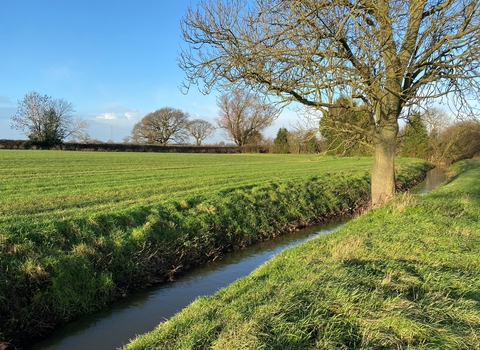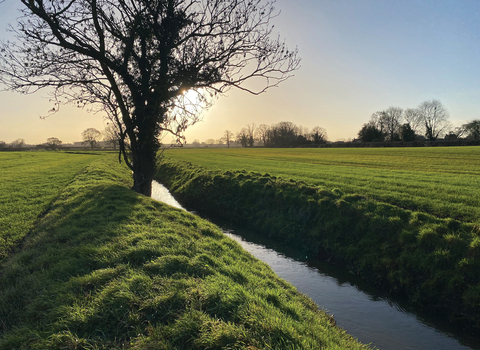Foss Catchment Revival: Nature, Water, Community
The Foss Catchment Project (FCP) is a partnership project with the long-term aims of improving water quality by reducing the amount of sediment and pollution entering the watercourse, as well as mitigating flood risk throughout the Foss catchment and improving habitat for the River Foss wildlife.
The catchment-based approach holds people at the heart of the restoration and conservation of river habitats. We want to work together to make the nature around us wilder.Yorkshire Wildlife Trust
2024-2025 Projects: Project Officer - Monika
Surveys
Yorkshire Wildlife Trust in collaboration with the Wild Trout Trust carried out walkover surveys on 10.88 km of the main river Foss and 1.5km of tributaries ( Foss from source to Farlington Beck; Brandsby Beck & St Johns Well Chalybeate)
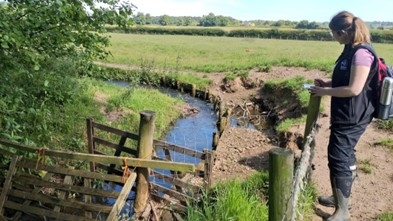
Case study 1 – Farm in Stillington (phase 1): YWT and Foss Internal Drainage Board
Issue: Sediment inputs from eroded riverbanks.
Solution: The Yorkshire Wildlife Trust in collaboration with the Foss Internal Drainage Board performed riverbank reprofiling of 210 metres to create 2-stage channel. YWT with help of over 30 volunteers installed fascines, bionets and seeded banks with a bespoke riparian seed mix (50 % grasses and 50 % UK native wildflowers of 19 different species)
Before
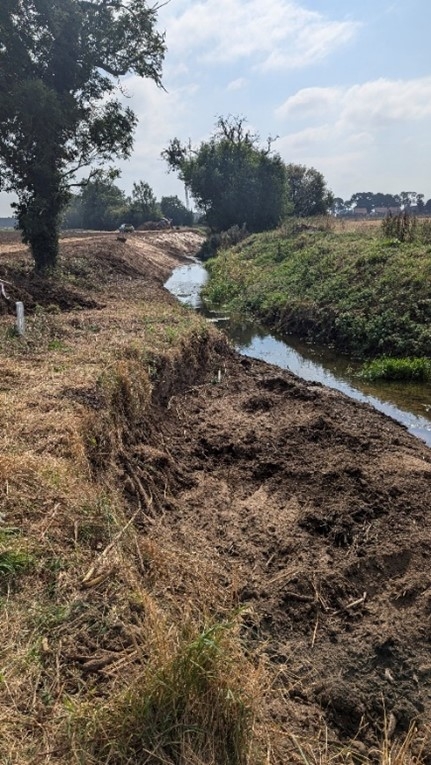
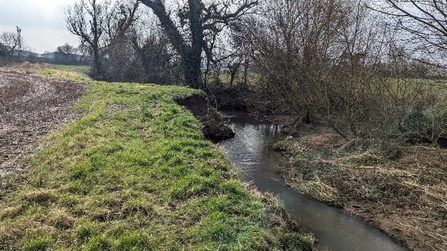
During
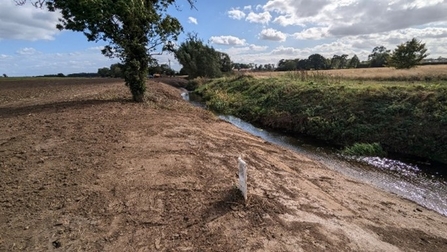
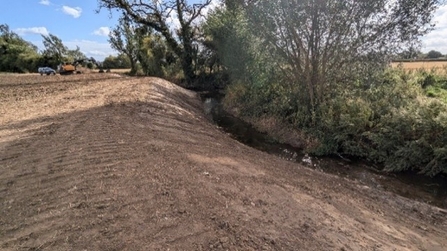
After
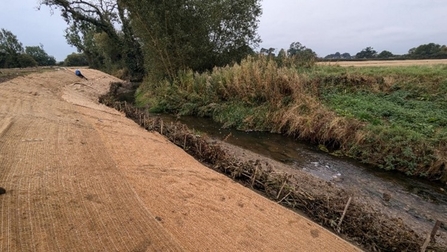
Case study 2 – Farm in Stillington
Issue: Sediment and nutrient run off from livestock and machinery tracks and overland flow from bare soil. River Foss approximately 120m from the farm yard.
Solution: YWT officer in collaboration with Catchment Sensitive Farming Officer and Public Ways of Access supported landowner to obtain funding from Rural Payment Agency to introduce:
- 1.3 km of hardcore track,
- 7 cross drains,
- resurfacing 2 gateways.
Additionally, YWT funded complementary 3 sediment trap ponds, which were also planted with aquatic wetland plant plugs.
Along the farmtrack we have planted 160 native trees and shrubs and seeded the newly created farmtrack margin and pond margins with wildflower-rich seed mixes. Our approach creates new areas for wildlife whilst catching sediment run-offs, which will contribute to improvement of water quality in the River Foss.

Pond 1 at Stillington Farm
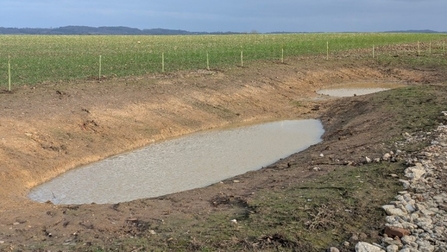
Pond 2 at Stillington Farm
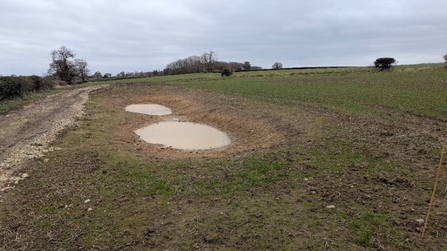
Pond 3 at Stillington Farm
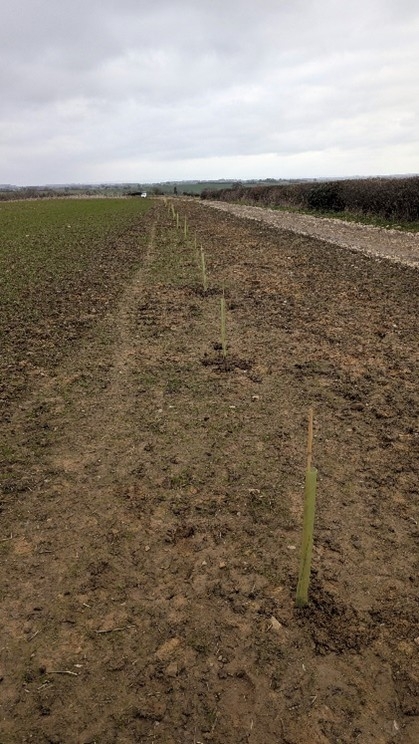
Trees planted at Stillington Farm.
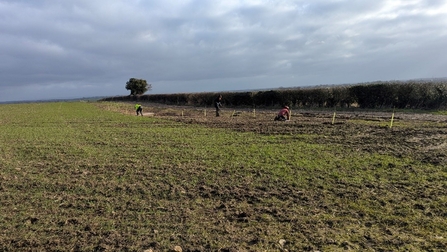
Planting trees at Stillington Farm.
Case study 3 - 4 adjoining landowners in Stillington
Issue: Low macrophytes biodiversity (aquatic plants) and areas of bare sediments causing siltation and increased risk of Himalayan Balsam invasion.
Solution: YWT officer with help of volunteers planted 1165 wetland plants plugs
(of 18 different species) across 185 metres of the main River Foss and its tributary ‘spring’.
During installation:
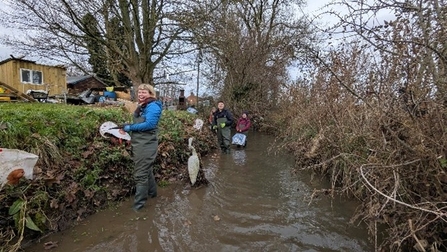
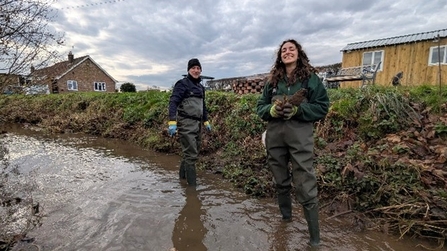
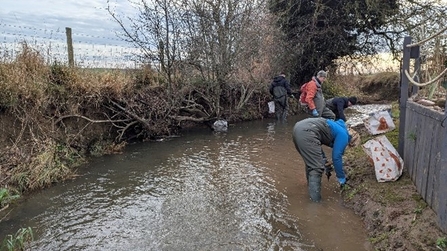
Wetland plants immediately after installation (they are very small in the beginning !):
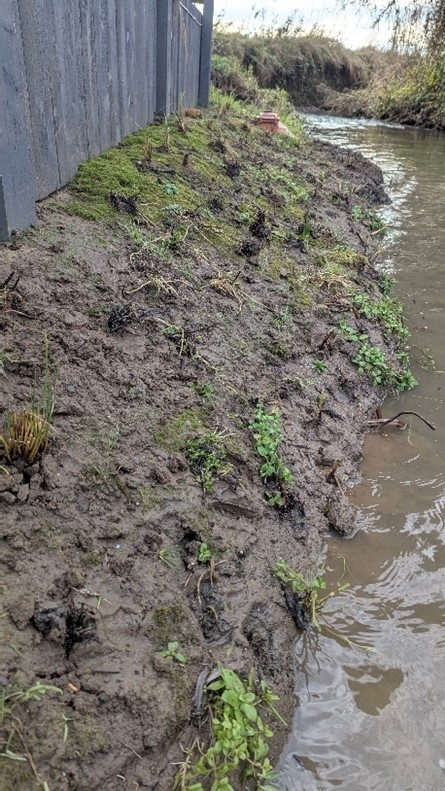
Case Study 4 - Farm in Stillington (phase 2): YWT and Foss Internal Drainage Board
Issues: Sediment inputs from eroded riverbanks, narrow river corridor and low biodiversity of aquatic vegetation
Solution: Yorkshire Wildlife Trust in collaboration with the Foss Internal Drainage Board performed riverbank reprofiling of 70 metres to create 2-stage channel and additional low-laying wetland area (0.042 ha), which will eventually become a species-rich wetland. This is in addition to 210 metres which were restored in September 2024 on the opposite side (see Case Study 1).
After reprofiling, YWT (with the help of volunteers) installed bionets, seeded banks with bespoke riparian seed mix (50 % grasses and 50 % UK native wildflowers of 19 different species) and planted with wetland plants plugs. Additionally, 325 trees were planted to improve riparian buffer zone.
Before:
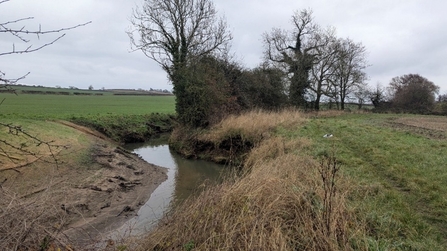
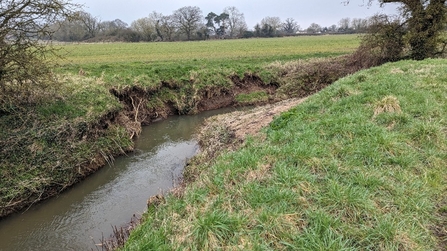

After - February 2025
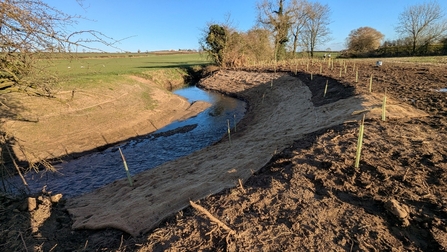
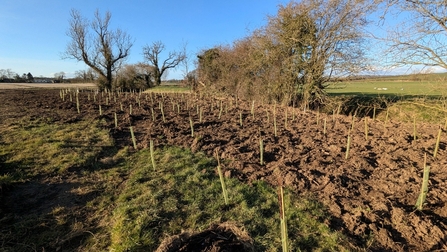
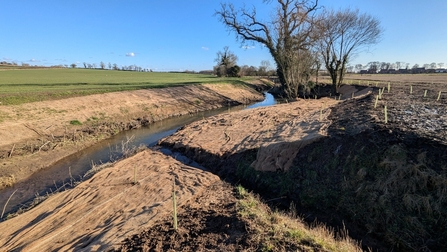
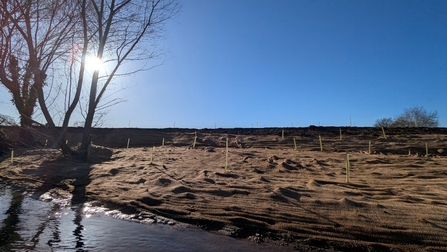
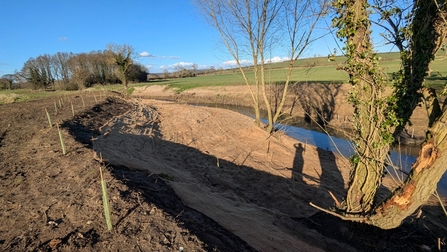
Case study 5 – Farm in Crayke, YWT and Foss Internal Drainage Board
Issues: Eroded riverbanks, livestock poaching, narrow and uniform river corridor.
Solution: The Yorkshire Wildlife Trust in collaboration with the Foss Internal Drainage Board lowered riverbanks to create low-laying wetland area (0.02 ha). Throughout the rest of this river section (215 metres), we have introduced a gentler angle of the riverbank, opposed to the trapezoid shape. This will allow river ‘to breathe’ - river will have more space in the corridor, which will reduce pressure on the banks and prevent erosion. The entire reprofiled section was seeded with bespoke riparian seed mix (50 % grasses and 50 % UK native wildflowers of 19 different species).
To prevent livestock entering watercourse, FCP funded 440 metres of new livestock fencing along the river which also allowed to expand riparian buffer zone by 3 metres. Additionally, YWT funded alternative drinking point for livestock – solar operated sheep trough and new farmgate.
Next steps: We have planned some additional measures for April 2025 to address river erosion and lack of marginal vegetation:
- YWT in collaboration with the Wild Trout Trust will install 20 flow deflectors on the straight section of the river to allow for natural deposition and sorting of the sediments and reintroduce natural river sequence pool-riffle-glide. Sediment is naturally deposited behind the flow deflectors, encouraging plant growth. The new habitat created act as a shelter for fish and insects.
- YWT with help of volunteers will install 8 coir rolls with native wetland plants. Planted coir rolls will allow to establish dense, native marginal vegetation (Lesser pond sedge, Yellow Flag Iris, Soft rush, Purple Loosestrife, Gypsywort, Water Mint and Meadowsweet), which will establish rapidly and provide hardy cover. Coir rolls are shown to provide excellent habitat for aquatic species.
- YWT with help of volunteers will install fascines (rough bundle of dead brushwood), which will improve and protect riverbanks from erosion, as well as provide additional habitat for aquatic species.
Before:
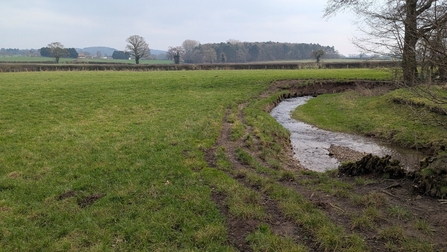
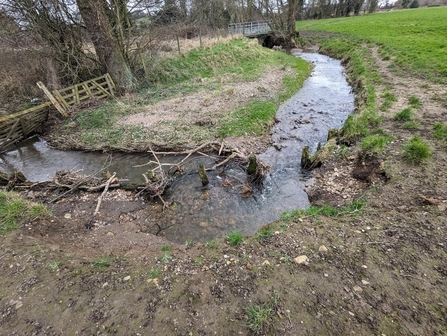
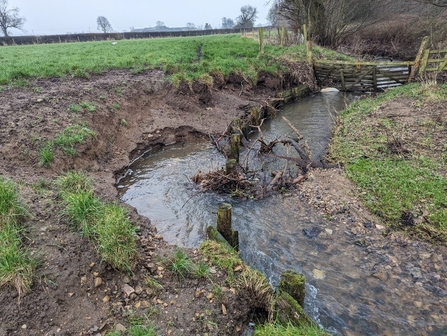
After reprofiling (March 2025):
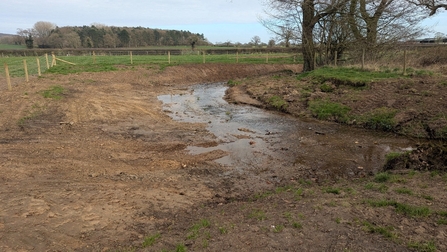



Fencing, farmgate & trough:
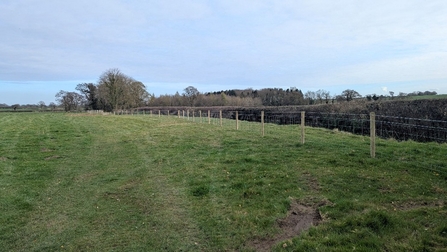
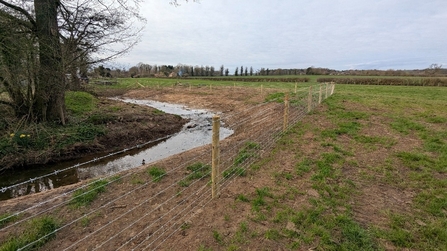
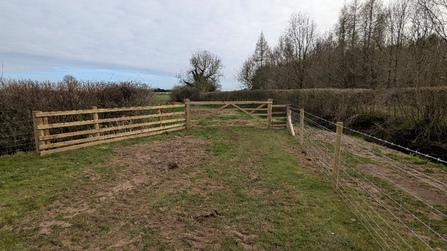
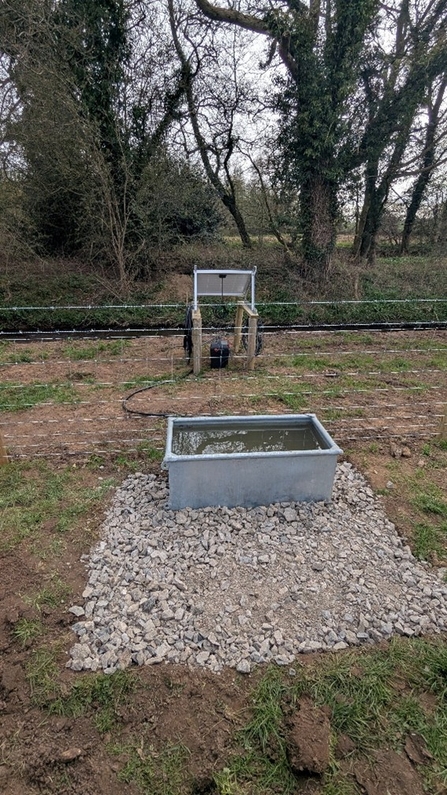
Stakeholder Engagement and Volunteering
In 24/25 River Project Officer Monika Smieja has engaged with:
- 15 landowners and farmers across Oulston, Stillington and Crayke and went on 70 site visits.
- Over 100 stakeholder and partners through meetings, talks and wider communication.
50 volunteers from YWT, River Foss Society, Environment Agency, DEFRA & North Yorkshire Council has supported Foss Catchment Project throughout 11 Task Days.
River Project Officer Monika Smieja gave three talks about Foss Catchment Project and importance of river restoration:
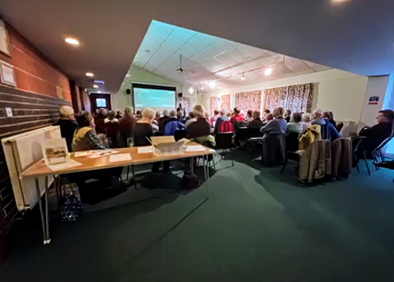
River Foss Society - 17th April 2024
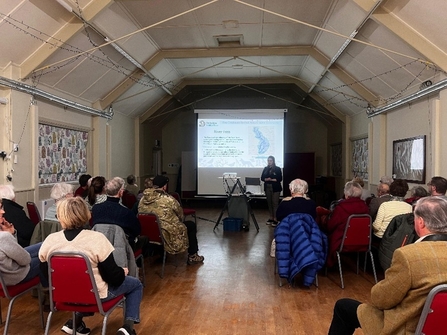
Stillington Gardening Club - 29th Jan 2025
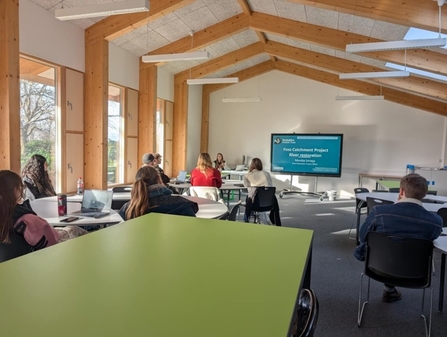
Askham Bryan College, Rivers and Ocean Systems module students - 3rd Feb 2025.
2023-2024 Projects: Project Officer – Monika
Case study 1 – Farm in Stillington
Issue: Sediment and pollution run-offs, sediment trap ponds were not vegetating naturally, thus the pollution would not be effectively filtered out before entering river.
Solution: Installation of 45m of coir rolls and planting 600 wetland plants plugs on 2 sediment trap ponds.
Immediately after installation
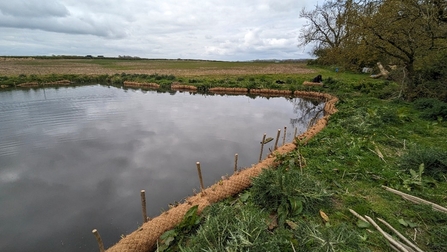
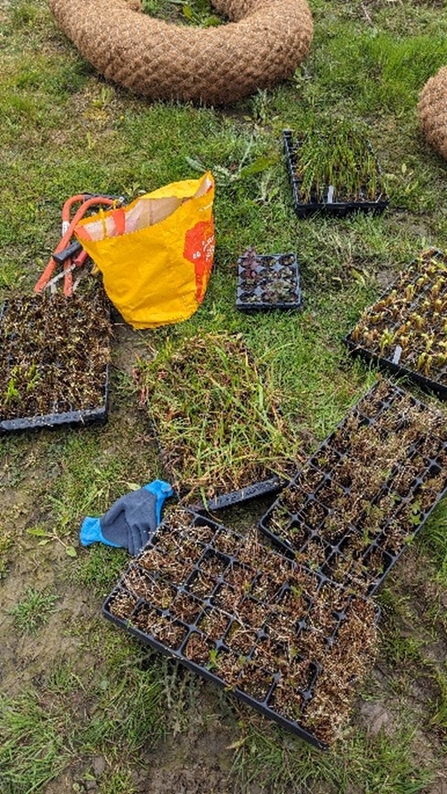
6 months after installation:

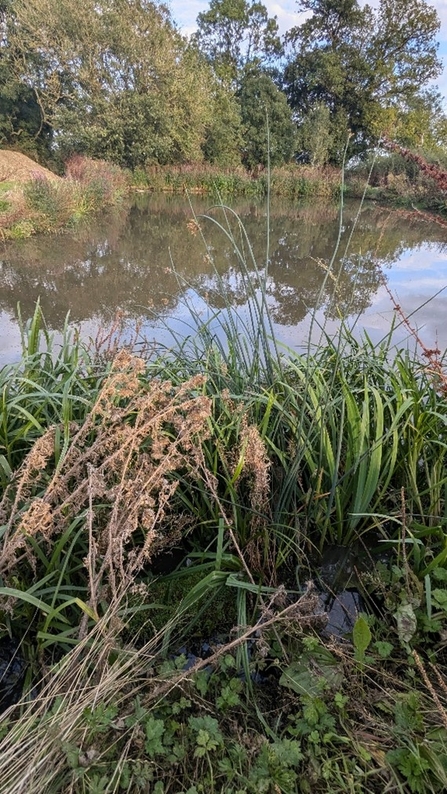
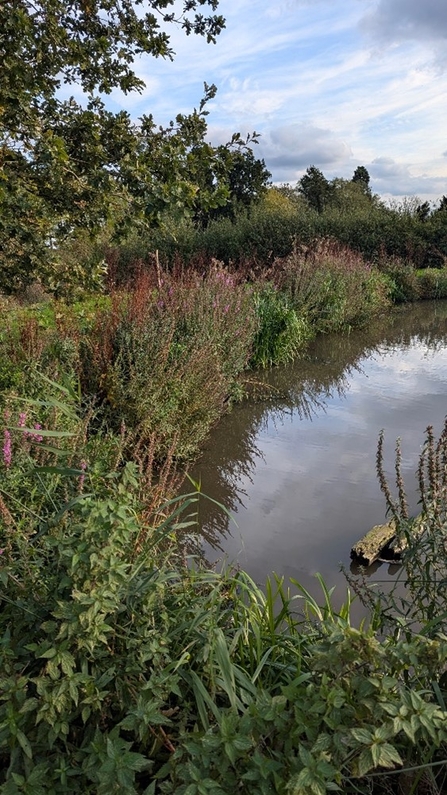
Case study 2: Farm in Oulston
Issue: Livestock poaching of the riverbanks
Solution: Installation of livestock crossing from recycled plastic with rubber anti slip, providing two alternative drinking points for livestock with solar operated water pumps, enhancing buffer zone with wetland plant seed mix.
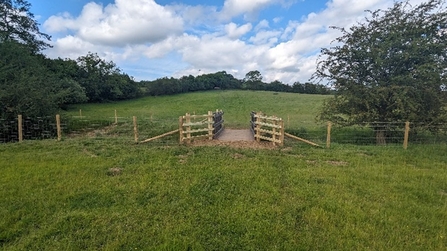
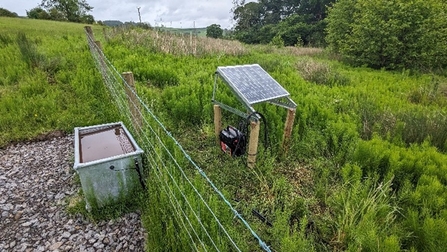
2019-2021 Projects: Project Assistant – James
Surveys
Yorkshire Wildlife Trust carried out walkover surveys on around 72km of the Foss Catchment watercourse.
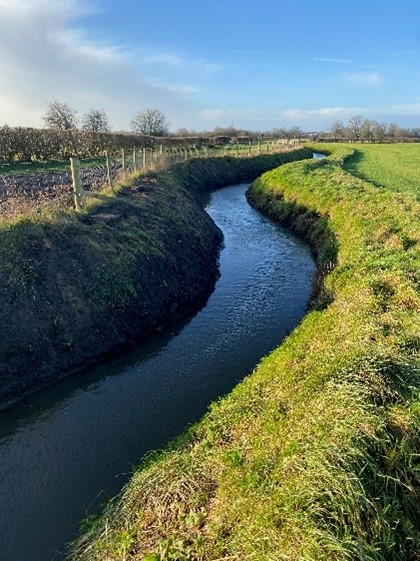
Case study 1: Farm in Farlington
Issue: Livestock poaching
Solution: 340m of fencing has been installed to protect a section of the river from poaching and alternative drinking point provided for livestock
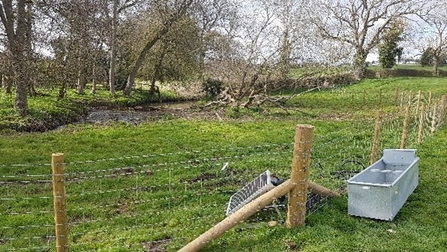
Case study 2: Farm in Stillington
Issue: Farmtrack run-offs
Solution: A storage pond has been created to catch runoff and sediment during heavy rainfall events, which also provides additional wetland habitat.

Case study 3: Farm in Brandsby
Issue: Farmtrack run-offs
Solution: Farmyard runoff has been prevented by installing a culverted drain beneath the yard, with a sediment trap to catch silt before it reaches the river.
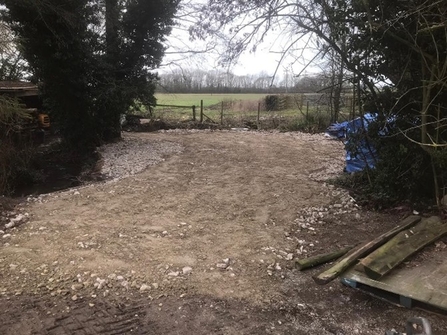
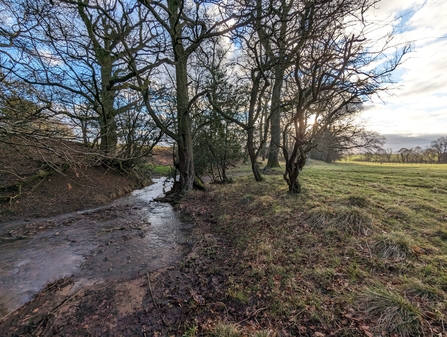
Everything you need to know
Where is the River Foss?
The Foss is a large tributary of the River Ouse, starting as a spring near Oulston Reservoir before flowing south through the Vale of York and joining the Ouse in York city centre. Foss catchment includes 6 water bodies (Fig.1). To the north of the catchment, the river runs through largely rural agricultural land, while to the south this becomes a more urbanised landscape, particularly as the river passes through York.
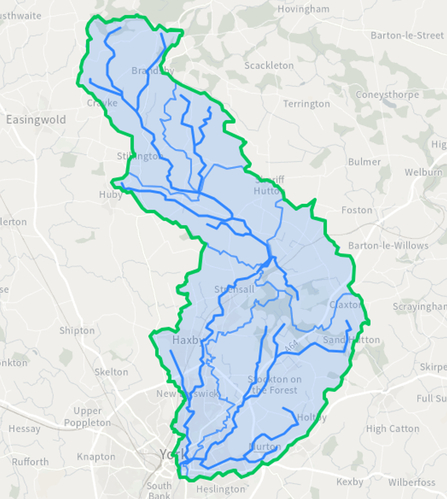
Figure 1 River Foss Catchment.
Map source: https://environment.data.gov.uk/catchment-planning/OperationalCatchment/3190
What are the issues?
The Water Framework Directive (WFD) sets out targets for water quality in all UK rivers to reach a ‘good’ ecological status– the Foss is currently not achieving this, therefore improvements need to be made for water quality within the catchment. YWT carried out walkover surveys on around 72km of the Foss Catchment watercourse and the main issues identified are:
Excess sediment
Sediment is an important part of a healthy river environment. However, excess sediment generated by human pressures can cause problems. In the River Foss catchment, precipitation drains overland carrying sediment, which then settles out clogging road gullies and building up within a watercourse. This results in less space for water within the river cross-section, which can lead to an increased risk of flooding downstream and increased risk of surface water flooding.
The River Foss responds fairly quickly to heavy rainfall events, therefore higher levels of sediment within the watercourse further worsens the issue. Sediment accumulation also has a negative impact on aquatic habitats and wildlife – for example, finer silts can fill up the spaces between gravels in riverbeds, preventing fish spawning and egg survival.
Pollution
Some nutrients and chemicals ‘stick’ to soil particles, meaning pollutants can be transported into watercourses by sediment from surrounding land. This often happens during rainfall events when soil is washed off slopes and into rivers and is a particular issue towards the north of the Foss catchment. In the south of the catchment where land use is more urban, pollution mainly comes from sewage discharge directly into the river.
Project aims
FCP’s ambition is to become a joint effort and across-catchment collaboration with a wide range of stakeholders such as:
- Landowners
- Land managers
- Farmers
- Local communities
- North Yorkshire Council
- North Yorkshire and York Local Nature Partnership
- Environment Agency
- St Nicks
- River Foss Society
- York St John University
- University of York
- City of York Council
- Yorkshire Dales Rivers Trust
- Natural England Freshwater Habitats Trust
- Foss IDB
- National Farmers Union.
Improving water quality, improving riparian habitat and mitigating flood risk throughout the Foss catchment can be achieved through Natural Flood Management (NFM, Fig.2). This management practise complements other flood management approaches and involves working across the landscape to protect, restore and mimic the natural hydrological processes that occur.
The primary functions of NFM are: holding back sediments, storing water, slowing the flow of the water and increase infiltration. Additionally, NFM provides co-benefits such as habitat creation, biodiversity enhancement, soil improvement and retention, water quality improvement, carbon storage, and boosting the local economy through recreation and tourism. The FCP takes a catchment-based approach, meaning a whole catchment view of the issues and remedies is taken into consideration.
What can we offer?
We want to work collaboratively with land managers and farmers to find mutually beneficial solutions that support people's livelihoods and improve water quality, natural flood management, and the River Foss wildlife.
We aim to work with local communities and land managers to create personalized strategies based on individual needs and local environmental conditions.
YWT can offer a wide range of natural flood management* (NFM) solutions, which recreate natural processes and remedy the imbalance within a river basin such as:
- Tree planting
- Creating and increasing buffer strips
- Hedge planting
- Aquatic vegetation planting
- Creating drinking points for livestock
- Installing new fencing
- Creating wetland areas
- Creating freshwater ponds
- Controlling invasive species
- Reprofiling riverbanks
- Riverbank stabilization to prevent erosion
- Introducing sediment traps
- Creating leaky dams and ponds
- Wildflower meadow planting
- Creating habitat piles for insects.
Learn more about these methods here or watch the videos below.
*We would like to highlight that none of these methods will carry a risk to people’s livelihoods or increase flood risk. Natural Flood Management methods will not eliminate the incidence of flooding, but they will reduce the frequency and impacts of flooding.
River management techniques (https://www.youtube.com/watch?v=21YAP8RF_sw)
© agence de l’eau Rhône Méditerranée Corse / Big Bang Communication
Why you should get involved
Land managers, landowners, and farmers have an extremely important role in managing and preserving, water, and land for current and future generations. We believe local communities hold a key to understanding local environmental conditions, which alongside environmentally friendly management practices can help us protect, conserve, and restore wildlife in the River Foss Catchment, whilst managing flood risk.
Without your help, it will be extremely hard to reach the aims of this project and precious river habitats and species may be irreversibly lost.
Your livelihood always comes first. As such we want to help raise awareness of land and soil management practices that are environmentally friendly but also carry financial benefits for farmers and landowners.
It is estimated that soil erosion in the UK results in the annual loss of around 2.2m tonnes of topsoil. This costs farmers across the country £9m a year in lost production. This alongside high costs of fertilizers and loss of subsidies, puts extreme pressure on people’s livelihoods.
Let us help you, whilst taking care of our wildlife. As an incentive, we also offer advice on environmental schemes available to farmers and landowners.
Please find further information about how you can get involved and what happens if you decide to join us in our Foss River Catchment Revival information pack.
Partners/Funders
Yorkshire Wildlife Trust (YWT) has been working on the Foss Catchment Project in partnership with North Yorkshire Council, and in 2023 YWT obtained funding from the Environment Agency to continue the work on the Foss Catchment Project for the next 3 years.
Contact us
If you have any queries regarding the Foss Catchment Project or would like to get involved, please contact Monika Smieja (River Restoration Project Officer) by email: monika.smieja@ywt.org.uk or by phone: 07721 961104.
Your livelihood comes first
We want to help raise awareness of land and soil management practices that are environmentally friendly but also carry financial benefits for farmers and landowners.
It is estimated that soil erosion in the UK results in the annual loss of around 2.2m tonnes of topsoil. This costs farmers across the country £9m a year in lost production. This (alongside high costs of fertilizers and loss of subsidies) puts extreme pressure on people’s livelihoods.
Let us help you, whilst taking care of our wildlife. As an incentive, we also offer advice on environmental schemes available to farmers and landowners.

